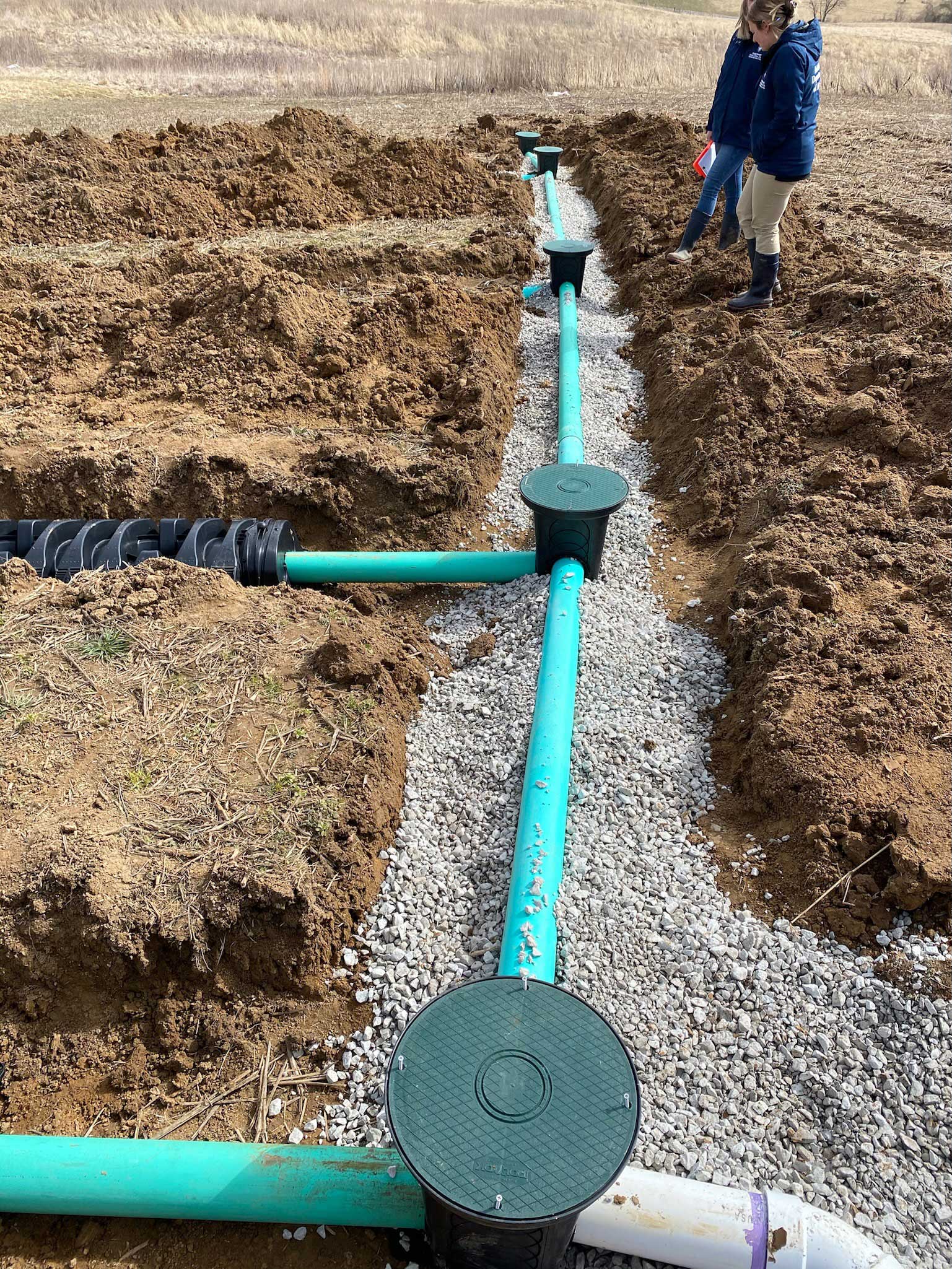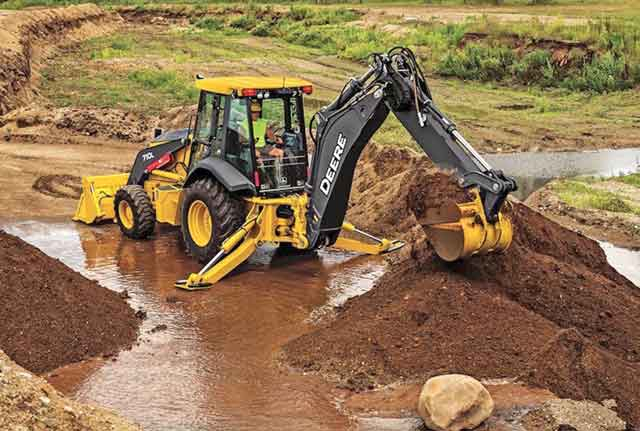Excavating Ohio - Leading Excavation Specialists for Ohio Projects
Excavating Ohio - Leading Excavation Specialists for Ohio Projects
Blog Article
Revealing the Art of Excavation: Pro Tips for Safe and Productive Digging
As soil is turned and planet is moved, the intricacies of excavation expose themselves, requiring an eager understanding of equipment, dirt composition, safety and security protocols, and environmental factors to consider. The knowledge needed to navigate these aspects effectively can indicate the distinction in between a successful excavation task and a possible disaster.
Significance of Appropriate Tools
To guarantee the safety and security and effectiveness of any type of excavation project, utilizing the ideal tools is paramount. The right tools not only enhance productivity however likewise alleviate threats connected with digging. Excavation tasks differ in scope and intricacy, varying from tiny residential landscape design work to large-scale building undertakings. Regardless of the project dimension, having the proper equipment can make a considerable distinction in the end result.
Excavators are basic pieces of equipment in any type of digging operation. These flexible equipments been available in various sizes to suit various job demands. Tiny excavators are excellent for smaller jobs, while larger excavators deal with extra substantial tasks successfully. Backhoes are an additional vital tools type, integrating the functions of a loader and an excavator in one maker. They are valuable for jobs calling for flexibility and maneuverability.
Besides excavators, various other essential tools consists of dump bulldozers, plates, and trucks. Dump vehicles are essential for eliminating and moving excavated products, while trenchers are made use of for excavating deep and slim trenches. Excavators excel in tasks that need pressing large quantities of soil or debris. By purchasing the suitable tools, excavation jobs can be completed safely, on time, and with accuracy.
Recognizing Dirt Structure
A comprehensive grasp of soil composition is fundamental for performing excavation projects with precision and safety. Recognizing the various types of dirt is critical as it straight influences excavation approaches, devices option, and overall job effectiveness.
Silt fragments are smaller than sand however larger than clay, providing moderate water drainage and communication. Organic matter, such as decomposing plant material, impacts soil fertility and security.
Before commencing excavation, performing soil examinations to establish its structure and characteristics is vital. This details assists in picking the ideal equipment, applying precaution, and creating excavation approaches customized to the particular soil conditions - septic ohio. By recognizing soil make-up, excavation experts can improve job outcomes while guaranteeing security and adherence to ideal practices
Precaution and Methods
Recognizing dirt structure is the foundation whereupon security measures and protocols for excavation jobs are built, ensuring the wellness of employees and the success of the endeavor. When it involves safety during excavation, there are several key measures that have to be executed to reduce risks and avoid accidents.
Firstly, prior to any kind of digging commences, a complete evaluation of the website must be performed to identify any potential risks such as below ground utilities, unpredictable soil problems, or neighboring frameworks that could posture a danger. It is essential to have a proficient person supervise the excavation process to make sure that all security methods are complied with strictly.
Moreover, all workers associated with the excavation has to be effectively learnt risk-free excavating techniques and great site the proper operation of devices. Individual safety tools (PPE) such as hard hats, high presence garments, handwear covers, and security boots need to be put on at all times to minimize the danger of injuries. lancaster trenching. Routine safety and security meetings and tool kit talks should also be performed to maintain all workers notified about possible threats and strengthen secure job practices. By adhering to these safety and security steps and procedures, excavation jobs can be finished efficiently and without case.
Effective Excavation Preparation
When getting started on an excavation project, thorough planning is essential to ensure performance, safety and security, and successful end results. Reliable excavation preparation entails numerous vital actions that are important for the smooth implementation of the task.
When the site analysis is total, the next step is to create a clear timeline and schedule for the article excavation activities. This includes establishing the sequence of tasks, devices needs, and manpower appropriation. Appropriate organizing helps stay clear of delays and ensures that the task remains on track.

Furthermore, communication amongst all staff member is vital during official statement the preparation phase. Clear directives, routine updates, and effective control are vital for an effective excavation job. By investing effort and time in careful planning, excavation groups can substantially enhance productivity, decrease threats, and accomplish effective results.

Handling Ecological Considerations
With enhancing focus on environmental sustainability in building methods, handling environmental considerations has come to be a vital element of excavation tasks. Excavation activities have the possible to influence the surrounding atmosphere with dirt disintegration, sediment drainage, habitat disturbance, and contamination of water resources. To mitigate these dangers, it is necessary to implement finest techniques that prioritize environmental management.

Additionally, proper waste management is critical to stop soil and water contamination. Implementing procedures for the disposal of harmful products, recycling of waste products, and reducing the use of harmful chemicals can dramatically lower the ecological effect of excavation projects. By incorporating these methods right into excavation preparation and implementation, building and construction business can make sure that their projects are not just risk-free and productive yet additionally eco accountable.
Final Thought
To conclude, understanding the art of excavation calls for a detailed understanding of proper tools, soil structure, precaution, and efficient planning. By complying with these guidelines and thinking about ecological elements, excavations can be performed securely and successfully. It is crucial to prioritize safety and security and efficiency in every digging task to guarantee effective outcomes.
As dirt is turned and planet is moved, the details of excavation expose themselves, demanding an eager understanding of tools, soil composition, safety procedures, and environmental factors to consider.To ensure the security and efficiency of any type of excavation project, using the suitable equipment is critical.A detailed understanding of dirt structure is essential for implementing excavation jobs with precision and security. Comprehending the different kinds of soil is vital as it directly influences excavation methods, equipment choice, and total job performance. By understanding soil composition, excavation professionals can improve task results while guaranteeing safety and adherence to ideal methods.
Report this page